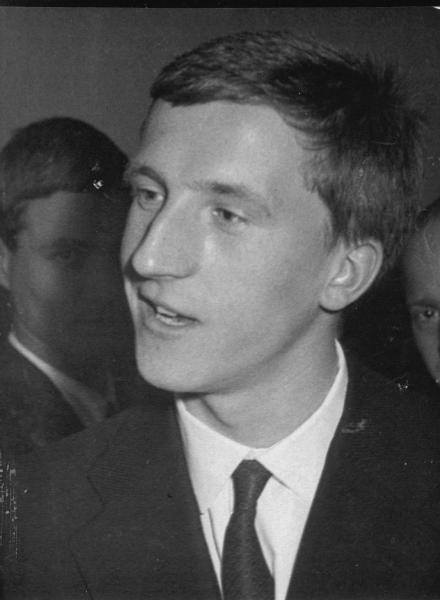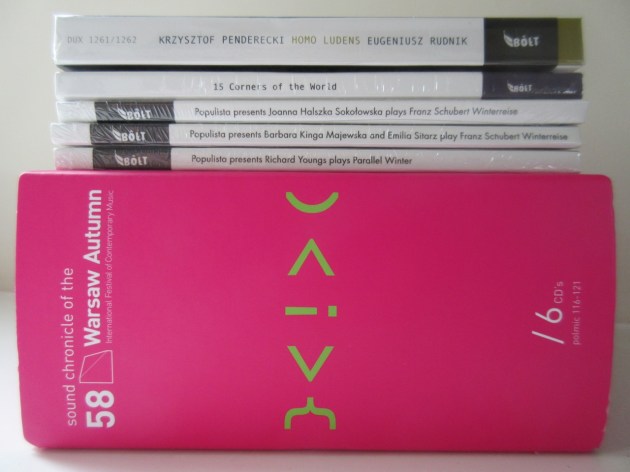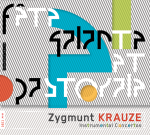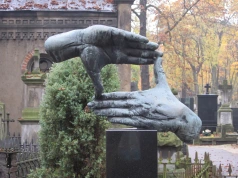Wednesday, 13 November 2013
Today is the 25th anniversary of the death of Górecki’s near-contemporary Tomasz Sikorski (1939-1988). Yesterday marked the third anniversary of Górecki’s death, but some sources (Wikipedia) also give yesterday as the date of Sikorski’s death, while others (Encyklopedia Muzyki, New Grove) give tomorrow, 14 November. The most reliable Polish sources (Encyklopedia Muzyczna, Polish Music Information Centre POLMIC, PWM) give today, 13 November.
 Sikorski was and is one of the most singular voices in post-war Polish music and it is good to see that he still attracts a devoted following, not least through recent releases of his work on Bôłt Records.
Sikorski was and is one of the most singular voices in post-war Polish music and it is good to see that he still attracts a devoted following, not least through recent releases of his work on Bôłt Records.
When I was in Warsaw in January I went to a recital of some of his pieces by his friend and lifelong advocate of Polish piano music, the Hungarian pianist Szabolcs Esztényi. The event marked the recent release of two Bôłt CDs, issued in partnership with several like-minded advocates such as Polish Radio 2, Polish Radio Experimental Studio, Foundation 4.99, DUX records, Bocian Records and the journal Glissando. Sikorski’s music is/was published by PWM, Author’s Agency (Agencja Autorska), Moeck and Edition Modern.
 Solitude of Sounds. In memoriam Tomasz Sikorski (DUX 0936/0937) is a 2-CD set that also includes pieces by Esztényi (Created Music no.3 and Concerto) and Kasia Głowicka (Presence). The Sikorski pieces are Echoes II (1963), Antiphons (1963), Solitude of Sounds for tape (1975) and Diario 87 for reciter and tape. Sikorski himself performs on the first two of these archival recordings, and Esztényi writes a penetrating and disturbing recollection of his friend, who died in unexplained circumstances aged just 49.
Solitude of Sounds. In memoriam Tomasz Sikorski (DUX 0936/0937) is a 2-CD set that also includes pieces by Esztényi (Created Music no.3 and Concerto) and Kasia Głowicka (Presence). The Sikorski pieces are Echoes II (1963), Antiphons (1963), Solitude of Sounds for tape (1975) and Diario 87 for reciter and tape. Sikorski himself performs on the first two of these archival recordings, and Esztényi writes a penetrating and disturbing recollection of his friend, who died in unexplained circumstances aged just 49.
 The second CD marks another, if briefer friendship, this time with forged with John Tilbury (b.1936), who met Sikorski in Zbigniew Drzewiecki’s piano class at the Higher School of Music in Warsaw in the early 1960s. Tilbury’s CD For Tomasz Sikorski includes recent recordings that he made of his friend’s Zerstreutes Hinausschauen (1972), Autograph (1980) and Rondo (1984) plus his own Improvisation for Tomasz Sikorski (2011).
The second CD marks another, if briefer friendship, this time with forged with John Tilbury (b.1936), who met Sikorski in Zbigniew Drzewiecki’s piano class at the Higher School of Music in Warsaw in the early 1960s. Tilbury’s CD For Tomasz Sikorski includes recent recordings that he made of his friend’s Zerstreutes Hinausschauen (1972), Autograph (1980) and Rondo (1984) plus his own Improvisation for Tomasz Sikorski (2011).
There is also, happily, a fair representation on YouTube, mostly uploaded by nocontrol696. Jackamo Brown has created a 12-work playlist from nocontrol696’s uploads:
• Monodia e Sequenza for flute and piano (1966)
• Homophony for four horns, three trumpets, three trombones, gong and piano (Homofonia, 1970)
• For Strings for three violins/violas (Na smyczki, 1970)
• Zerstreutes Hinausschauen for piano (1972)
• Holzwege for orchestra (1972)
• Music for Listening for two pianos (Muzyka Nasłuchiwania, 1973)
• Other Voices for 24 wind instruments, four gongs and bells (Inne głosy, 1975)
• Sickness unto Death for two pianos, for horns and four trumpets (Choroba na śmierć, 1976)
• Strings in the Earth for strings (Struny w ziemi, 1980)
• Autograph for piano (Autograf, 1980)
• La Notte for strings (1984)
• Diario 87 for reciter and tape
…….
For what they’re worth, here are two passages from my book Polish Music since Szymanowski (CUP, 2005), pp.213, 219-22, which discuss Sikorski and, initially, his contemporary and closest friend, Zygmunt Krauze, who happily is still very much with us (we met in Warsaw last Saturday).
If sonorism of the Pendereckian mould emanated from Kraków, Warsaw maintained a polite distance, preferring, in the music of Lutosławski, Baird, Serocki and others, to develop a closer architectonic relationship with detailed rhythmic and pitch organisation. Of the younger Warsaw generation who graduated in the 1960s, two composers quickly became pre-eminent: Zygmunt Krauze and Tomasz Sikorski (1939-88), son of the composer Kazimierz Sikorski. They were both his students, the latest in a line that already included Bacewicz, Baird, Kisielewski, Krenz, Palester, Panufnik and Serocki. From the beginning, they each showed a determined individuality which defined a different stream in contemporary Polish music.
[…]
Tomasz Sikorski’s contribution to Music Workshop [Krauze’s pioneering ensemble of clarinet, trombone, cello and piano] reinforces the essentially minimal ethos not only of much of the music promoted by the ensemble but also Sikorski’s own distinctive voice. This he established in a series of works in the mid-1960s – Antiphons and Echoes II (1963), Prologi (1964), Concerto breve (1965) and Sequenza I (1966) – in which the music proceeds by means of chains of small ad libitum fragments grouped in larger sequences. The quasi-improvisational chordal fragments are deployed antiphonally or as live or tape playback echoes in a reiterative heterophony that is obsessive and, like some of Krauze’s pieces, achieves a disembodied, altered state, particularly in the cumulative resonances and polymorphic character of Antiphons and Echoes II. Prologi is characterised by its mix of triadic ideas, diatonic scales and more dissonant material; his use of four-note cells, constructed from pairs of perfect fourths, is a feature of this and other compositions, where tritonal harmonies or pedals become a regular feature.
Sikorski’s pervasive nervous energy and unremitting focus on reductive processes occasionally approached the sonoristic values apparent elsewhere in Polish music (Concerto breve, Sequenza I), mainly by developing flickering, amorphous and quasi-stochastic textures. But in the works of the late 1960s he returned to an introspective, often fractured idiom which focussed on one or two key notions. In one of his rare comments on his compositional intentions, he described Sonant for piano (1967) in the following terms:
This work is based on the contrast between the attack and decay of sound. The work’s construction, above all its temporal organisation (augmentation of rhythmic values, approximate values, whose duration depends each time on the timbral characteristics of the piano), as well as its ‘form’ (static aspect, repetitions of structures, etc.), are the consequences of the distribution of Sonant‘s sound material in two strata: those of attack and decay.*
By the time of Homophony (1970), Sikorski had intensified the concentration of his material: ‘It is a proposal for static, one-dimensional music. In this work, both the sound material and its structuring are reduced to a minimum’.**
Homophony‘s instrumental forces reiterated Sikorski’s lifelong interest in specific timbres (it is scored for twelve brass, piano and gong) and he reinforced his fascination with the interface of diatonicism and dissonance in utilising a six-note bitonal chording, a combination of first-inversion G major and second-inversion B flat minor triads. His fundamentally diatonic language is particularly evident – even exposed – in the pared-down minimal reiterations of his Music Workshop commission, Untitled (1972). He had, by this stage, defined his musical persona as uncompromisingly austere in terms of both material and its deployment and of the timbral-expressive world which he explored (cf. Górecki in the late 1960s). He largely eschewed the temptations of orchestral sonorism (although in Holzwege for small orchestra, 1972, he achieved an almost Messiaen-like luxuriance both texturally and harmonically), usually preferring an ascetic palette in which his intense and often bleak reiterations could be given full rein outside traditional modes of discourse. In the 1970s and 1980s, these meditations took on a more defined existential and elegiac hue: he notably drew on the philosophical ideas of authors such as Heidegger (Holzwege), Kierkegaard (Sickness unto Death – Choroba na śmierć, 1976), Joyce (Strings in the Earth – Struny na ziemi, 1980), Beckett (Afar a Bird – W dali ptak, 1981), Nietzsche (La notte, 1984), Kafka (Das Schweigen der Sirenen, 1986) and Borges (Diario, 1987). Aside from his connections with Krauze, however, he remained a somewhat isolated figure, tirelessly and intriguingly exploring a consistent if narrow range of compositional rituals.
* Note in 1967 ‘Warsaw Autumn’ programme book, pp.89-90.
** Note in 1970 ‘Warsaw Autumn’ programme book, p.19.
 Secondly, I opened the boxed set of the ‘Warsaw Autumn’ sound chronicle for 2015 (six CDs). This annual post-Christmas gift is not available commercially but is distributed to institutions and interested parties by the Polish Music Information Centre, and it is always a treat to savour. As in recent years, the bulk of the recordings is of non-Polish music, and several of the main festival events – indoor and outdoor installations, music theatre – would not have suited the CD format. Here’s the complete list of recordings (Polish composers in bold, ** = world premiere, * = Polish premiere):
Secondly, I opened the boxed set of the ‘Warsaw Autumn’ sound chronicle for 2015 (six CDs). This annual post-Christmas gift is not available commercially but is distributed to institutions and interested parties by the Polish Music Information Centre, and it is always a treat to savour. As in recent years, the bulk of the recordings is of non-Polish music, and several of the main festival events – indoor and outdoor installations, music theatre – would not have suited the CD format. Here’s the complete list of recordings (Polish composers in bold, ** = world premiere, * = Polish premiere):






